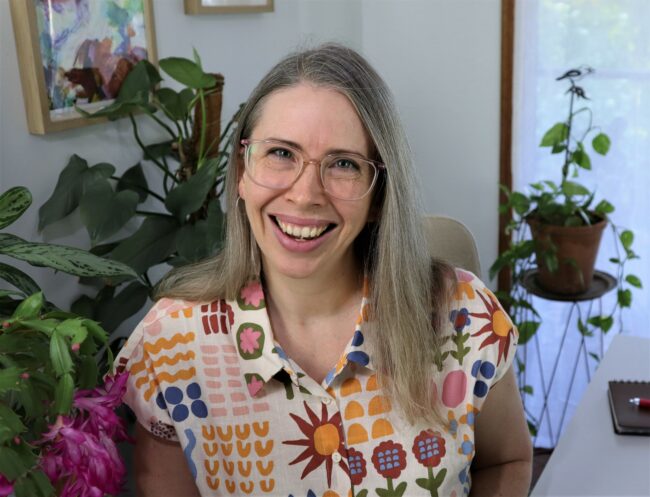
Most handmade designers, including myself, open a shop with no particular collection or product range. We are just happy to create and get an unforgettable feeling of excitement when something is sold.
When I started, there was no felt toys range even in my wildest dreams! I made a few pincushions, a few hair ties, headbands and some brooches…. I look back at what I used to make and I can honestly say it wasn’t anything special.
It was well made, but you could buy all that in other shops too…
However, I did have something that helped my shop identity to emerge later on – I was and still am passionate about promoting and preserving the old-fashioned crafts: cross-stitch, crochet, and hand-sewing.
A year or so went by and I started to have some kind of product range. I developed more sewing skills during that year of experimenting, and got a bit more confident thanks to people buying from me and complimenting on the quality and uniqueness of my creations.
I felt encouraged to explore the possibilities of new endeavours and go with every idea that came to my head. However, a few years later I faced the fact that I have a few product lines forming but they are all over the place!
The problem is (trust me, this is a problem) that I can make all sort of stuff if I put my mind to it.
To be brutally honest, my shop ended up looking like a handmade and pretty “all-sorts shop” – I made everything but nothing in particular.
I came to the conclusion that I need to ask myself – what do I want my business to specialise in? What I want my business name to be associated with?
I imagined customers saying “You know Plushka? She makes cute plush toys and her cross-stitched items are lovely! I can always find a unique gifts there” (talking myself up here 😉 ).
What would you like your customers to say when they talk about your shop?
Definitely not the following – “Not really sure what that shop offers but I found this beautiful skirt there, I guess clothes but she also has wall art, bibs and cushions…”
So, what do you do if you have 15-40 items in your shop but no particular range/collection?
1. Highlight 1-3 best items that you think sum up your shop, you as a designer, and what your brand is all about.
Like I said before, for me it was – felt owl (my first toy), cross-stitched items, and crochet. I took 3 areas that I wanted to specialise in.
It can be one or two, but it needs to be something you are good at and you want your shop to be THE place to buy those products.
2. Identify 1-2 main materials you work with. For example, Plushka works mainly with felt and linen. Felt as a primary material, linen secondary.
It’s all about being memorable! When I hear sterling silver, I think about Epheriell straight away! What if you clicked on Jess’s shop and saw fabric necklaces – you’d get a little confused, wouldn’t you?
3. Make sure the items you’ve chosen are profitable as they will be your breadwinners, they have to be profitable in terms of labour efforts and price.
Do you think you will be able to make them over and over again?
4. Fill the gaps! Analyze which items can start a range.
Pick one core item, let’s say skirt and start thinking in a line:
Skirt – top – hair tie: these 3 items can be worn together, almost all the same materials can be used so they won’t look out of place.
It’s a collection that complements each other in colours, material, it’s wearable when combined together.
Another example: necklace – earrings – bracelet – ring – all in a complementary style.
Yes, you can offer all sorts of stuff but they key is – all items within one range need to compliment each other.
There are 3 types of handmade items (sorry, no professional terminology here):
*Main creations that define your brand and shape your business. According to the price range and saleability, they are divided into 3 categories:
- best sellers (usually small and cheaper items)
- middle range ($20-$50)
- large more time consuming, hence more expensive items (packages, special orders or just labour intensive creations).
*Seasonal items – Easter and Christmas that are not available whole year round. They need to be revised and a few items added every year.
* Limited editions – These are the items you experimented with or creations from some rare fabric/paper you got hold of. They might turn into the main creations, depending on the demand, but most often they come and go. As a creative person, sometime you just want to make it regardless in a small quantity (like a few quilts, hats or posters) they are not something you do as a main line but you felt like making it in a small quantity (e.g. Plushka’s applied tops).
After you have your core range, the foundation of your shop identified, you can build on it.
Limited editions, one-offs and whatever you feel like can be offered but within the range.
After all, that what makes handmade shops unique and always fresh is the OOAK items that customers can get their hands on.
Start taking your range seriously and your customers will see you as a professional business with the designer/owner who knows what she wants and can offer (even if you don’t really).
It’s the brand that you are building that matters. That is what people will remember you for!







